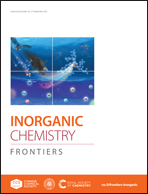Bismuth selenide nanosheets confined in thin carbon layers as anode materials for advanced potassium-ion batteries†
Abstract
Metal selenides as promising anode materials for potassium ion batteries (PIBs) have attracted great research attention. However, it is still a challenge to promote its practical application due to the unsatisfactory cyclability resulting from large volume variation and sluggish kinetics. Herein, we tackle this issue by focusing on a promising but undemonstrated anode, bismuth selenide for PIBs which possesses a high theoretical capacity and good electronic conductivity. Benefitting from the carbon layer coating, Bi2Se3@C has the capability to inhibit self-aggregation and buffer the volume expansion, leading to outstanding potassium-ion storage capability. It exhibits a very high reversible capacity of 526 mA h g−1 at 50 mA g−1, as well as superior cyclability and rate capability while maintaining a high capacity of 214 mA h g−1 at 1.0 A g−1 after 1000 cycles. Furthermore, its fast and reversible ion storage mechanism was verified, which first involves conversion and subsequent alloying redox reactions. This work enriches the understanding and development of stable conversion/alloying-based anodes for high-performance potassium-ion batteries.



 Please wait while we load your content...
Please wait while we load your content...